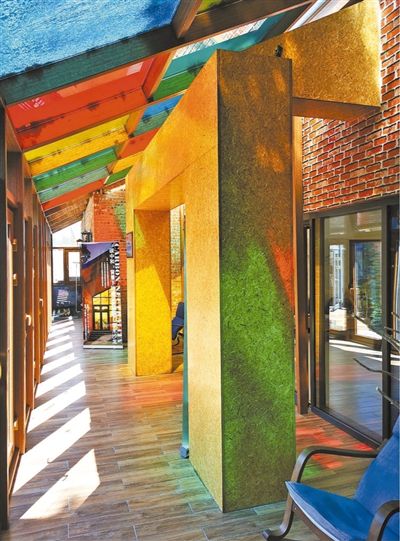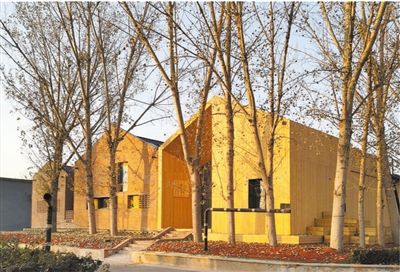China makes efforts in constructing more green buildings
The construction of low-energy buildings, an initiative which aims to reduce the consumption of conventional energy, is injecting power into the building industry as it seeks to cut carbon emissions.
Statistics revealed that the building industry accounted for 22 percent of the total amount of carbon emissions in China, indicating the construction industry’s importance for energy conservation and emission reduction. Thankfully, the industry has been on the move.

File photo shows the exterior of the "Zero House" which is an ultra-low energy consuming building.

File photo shows the roof of the "Zero House" which is an ultra-low energy consuming building.
In Beijing’s Daxing district, architects designed a demonstration project and named it the “Zero House”, as it boasts ultra-low energy consumption as its name suggests. The 400-square meter building, which was transformed from a rural house, uses 75 percent less fossil fuel energy than an average building and has achieved a new energy utilization rate of 60 percent, according to Ren Jun, a professor of architecture with Tianjin University in north China’s Tianjin Municipality. “The name ‘Zero House’ reflects our determination to achieve zero energy consumption,” Ren said.
The ultra-low energy consuming buildings adopt natural lighting and ventilation systems, use special materials for heat insulation, and introduce high efficiency equipment to minimize energy consumption in their heating, air conditioning, and lighting systems, said an official with the Ministry of Housing and Urban-Rural Development of China.
“Passive house,” originating from the German term “passivhaus,” is a standard for energy efficiency in a building using a design process integrated with architecture. Gaobeidian city, which is about 100 km south of Beijing, boasts a passive building construction area of 1.2 million square meters. The first phase of the project, which includes 26 residential buildings and a kindergarten, has been completed for use.
No heating or air conditioning system is needed in these buildings as the interior temperature self-regulates between 20 and 26 degrees Celsius all year round, while the humidity level remains between 30 percent and 60 percent.
To prevent heat loss in cold conditions and keep the houses cool in summer, thermal insulation materials with a thickness of 15 to 25 centimeters were painted onto the buildings, and the thickness for an average building is 7 to 8 centimeters, noted Wang Changming, an engineer with Longfor Properties Co. Ltd., a leading property developer in China. Wang disclosed that once all the buildings are put into use, they are expected to slash gas consumption by 2.16 million cubic meters, and save 3.19 million kilowatt hours of electricity each year.
The ultra-low energy consuming buildings boast a higher rate of renewable energy utilization. For instance, the roof of the “Zero House” is covered with solar panels and photovoltaic films that can generate 7,000 kilowatt hours of electricity a year, making the buildings largely self-sustaining in terms of power and hot water supply.
The ultra-low energy consuming buildings require 50 percent less energy on average than buildings built under the current standards. At present, there are approximately 10 million square meters of buildings that have been built or are under construction in China, and 60 percent of them are located in Beijing, Hebei, Shandong and Henan provinces. “Though the construction area of the buildings built each year is small, it’s growing very fast,” said Ren.
The rapid growth is inseparable from government support. Last year, seven departments, including the Ministry of Housing and Urban-Rural Development of China, issued a green building action plan, which encouraged localities around the country to raise the standards of government-invested public welfare buildings and large public buildings, promote the development of ultra-low energy consuming and near-zero energy consuming buildings, and expand renewable energy consumption and the use of reclaimed water.
Several Chinese provinces, including Jiangsu and Henan, have carried out low-energy building projects and have implemented preferential policies such as offering financial subsidies and incentives to support these projects. As of April 2020, Hebei province had allocated a total of 120 million yuan to subsidize ultra-low energy consuming buildings.
Photos
Related Stories
Copyright © 2021 People's Daily Online. All Rights Reserved.










